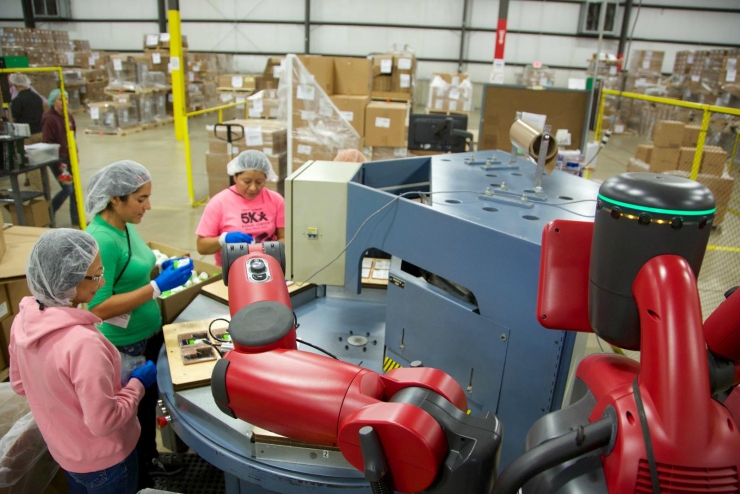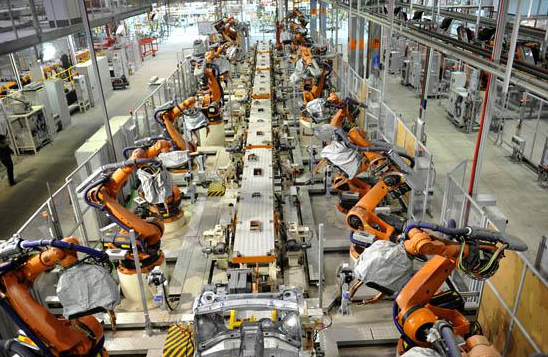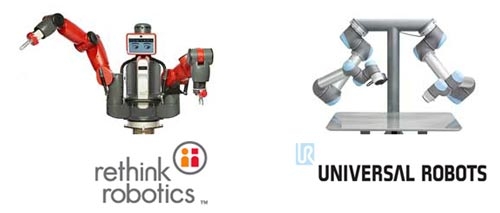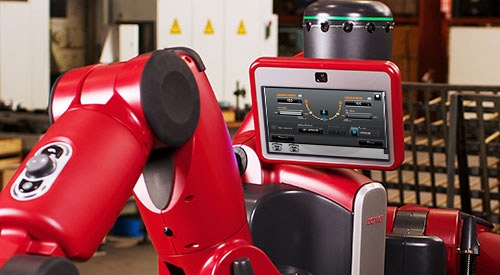
Lei Feng network (search "Lei Feng network" public concern): Forbes, author of this article Greg Satell, compiled by Lei Feng network (search "Lei Feng network" public number) exclusive compilation, refused to reprint without permission!
In 1961, when the world’s first industrial robot, Unimate, appeared on the GM production line, everyone thought it was a miracle brought about by modernization. For human workers, the work done by the robot is not only tedious, but also dangerous, but it can be easily qualified and saved.
Over 50 years have passed, the world has undergone enormous changes, and the robotic industry has developed rapidly. Because of the more sensitive motors and brakes, the robots are capable of more elaborate work, and the objects they have assembled have already changed from Buick cars to smart phones.
However, the key to the future of industrial robots is not better accuracy but better collaboration with humans.
In terms of cooperative robots, the robot company Rethink Robotics is an industry leader. Recently, Forbes interviewed the company’s chief product officer and chief marketing officer to learn more about the future of robotics.
From process work to real-time workFor a long time, manufacturing factories were occupied by large-scale production lines. Once the product is designed, the factory can put all kinds of accessories on the assembly line and assemble it together. It is true that this is an efficient and inexpensive method of production. However, inventory costs are also very high.
However, most of today's manufacturing industry has turned to lean production. In the past, we usually only made full efforts to produce, and then put the product into the warehouse, waiting for the customer's orders; but now more manufacturers are "instant" production: start production immediately after receiving orders to meet customer needs. Therefore, the driving force of the factory is the customer's demand.

The advantages of this "immediate" production method are obvious. It can greatly reduce inventory costs and increase customer customization. Manufacturers no longer have to think hard to predict how many colors of products to produce, now they can be flexibly adjusted according to customer needs.
However, this flexible and flexible production method is not suitable for traditional robots. In order to achieve better accuracy, people must classify robots to allow them to perform specific tasks. Therefore, such different robots can basically do only one specific job. It looks professional, but it creates a problem: If you need to make a small adjustment, then you must let the robot stop the work in hand, which will greatly reduce the efficiency.
The rise of collaborative robotsIn 2008, Robot founder Rodney Brooks founded Rethink Robotics as a co-founder, after which the company received an investment from Amazon CEO Jeff Bezos. Rodney Brooks aims to create "completely different" robots that can safely work with humans and easily adapt to new mission robots.
The Rodney Brooks robot (which has two types of robots: Baxter and Sawyer) differs from Unimate in not the more advanced hardware devices but the more intelligent software systems. They can work in a more flexible environment, which means that they know their relationship with their environment and can make adjustments according to changes in the environment. This is totally different from traditional robots.

For example, when you want a traditional robot to change something on a conveyor belt, you must make sure that the object is in a precise position. Baxter and Sawyer can sense where the object is, and change it easily. If someone is going through their work area, they can move to allow pedestrians to pass; if the conveyor belt abruptly stops running, they can wait until the conveyor is running again before putting the items on; if they need to complete another task, they only need to accept A few minutes of training can be easily started.
More importantly, Baxter and Sawyer have the ability to express themselves. If all goes well, they will smile; if the work is wrong, they will frown; if they have doubts, they will raise their eyebrows. Their eyes can show their action plans so that the workers with whom they collaborate can clearly understand their thoughts and actions. They are more like collaborative workers than factory machines.
The challenge still existsToday, Rethink Robotics is a vibrant company. Lawton said:
A few years ago, the company's orders were only a few or dozens at a time, and customers are now buying hundreds or even hundreds. I expect that thousands of orders will become the norm in the future.
However, there are still many problems to be solved on the road ahead.
First of all, although today's robots are very sensitive and able to move freely in the factory, they still have a lot of problems when they are engaged in highly flexible manual labor (such as threading needles or opening parcels).

Second, today's machine learning algorithms have limited ability to understand broader tasks. For example, if the algorithm is trained to recognize dogs, it can be done successfully and accurately. However, when the robot sees a family and a dog playing on the beach, it does not recognize the rest of the dog.
Lawton believes that for future robots, learning without supervision is crucial. The current barriers to the development of robots have been different from the ones used by Unimate. The difficulties have changed from higher mechanical levels to smarter software.
Where is the future road?With the development of machine learning algorithms and other technologies such as neuromorphic chips, robots are becoming more and more intelligent, and they can even accomplish tasks that humans cannot accomplish. They have better databases that better identify humans, machines and their peers around them, and can better collaborate with the environment.
This means that they can not only complete tasks, but also identify problems at work and find solutions. In addition, with the rapid development of technology, the cost of robots will become lower and lower.

For Lawn's problem of unemployment, Lawton said:
There are many factory employers among our customers. They have said that the imported robots did not replace the former workers. In fact, these workers are now doing more advanced work in the factory.
What we can confirm is that robots will become more and more important for the future economic development. It can greatly promote the development of productivity. The challenge for humanity is how to improve the robot's skills in the short term and make the robot more intelligent. In this way, robots can better collaborate with humans.
Via:Forbes
Xinzhi created the public number of the robot under the leadership of Lei Feng Network (search for "Lei Feng Net" public number). We are concerned about the status quo and future of robots, and related industries combined with robots. Interested friends can add micro signal AIRobotics, or scan the next Fanger Wei code directly into the line of attention!

Temperature And Humidity Test Chamber
Temperature And Humidity Test Chamber,Temperature Humidity Test Box,Test Machine For Aerospace,Constant Temperature Humidity Tester
Wuxi Juxingyao Trading Co., Ltd , https://www.juxingyao.com
